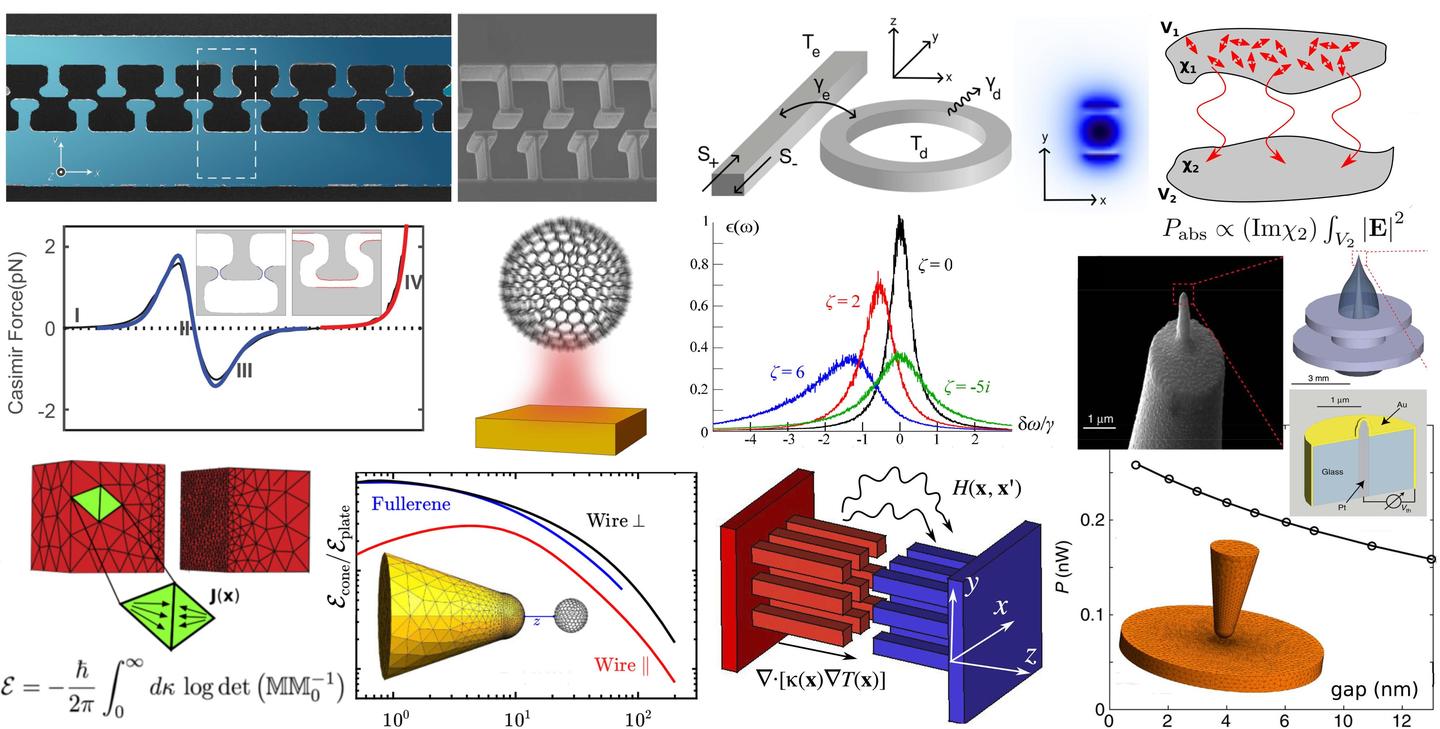
The Nanophotonics Theory and Computation Group engages in theoretical and computational research in the field of nanophotonics—the study of light in nanostructured media with features at the scale of the electromagnetic wavelength. Such patterned materials can exhibit dramatically different optical properties than those observed in naturally occurring materials, enabling new ways of controlling and manipulating the propagation and interaction of both coherent and incoherent light.
Our interests in this area span a variety of problems at the intersection of classical and quantum optics. On the one hand, we study nonlinear optical phenomena arising from the interaction of high-intensity light in structured media and leading to a variety of effects (such as frequency generation) which underlie the basic operation of many telecommunication and laser-based devices. For instance, a typical approach to lower the power requirements of these devices that poses a number of design challenges is to exploit micro-resonators capable of confining light at several wavelengths for long times and in small volumes. On the other hand, the very miniaturization of optical devices is pushing these systems into regimes where even tiny effects associated with quantum and thermal fluctuations of charges and electromagnetic fields become important. For instance, fluctuating fields carry momentum and energy and therefore lead to small optical forces as well as heat exchange between nearby surfaces, effects which can be enhanced and exploited in structured materials at sub-micron scales (such as for radiative cooling). Current research efforts in our group include development and application of theoretical/computational tools for designing and exploring photonic structures that can modify and exploit optical many phenomena. Topics of interest include,
- Low-power and single-photon nonlinear optics (e.g. frequency conversion at the wavelength scale)
- Fluctuation-induced phenomena (e.g. spontaneous emission, Casimir forces, heat transport)
- Nanophotonic design and asymptotics (e.g. electromagnetic bounds, numerical methods)
- Large-scale optimization (e.g. inverse design of nanophotonic devices)
For a list of our publications, visit the research and publications section.

Feel free to check out other research efforts in photonics and quantum science at Princeton.
